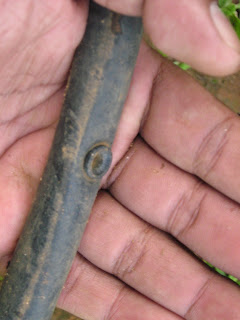 Pipes used for drip irrigation in the plantation.
Pipes used for drip irrigation in the plantation. Mister
Mister mister a close look
mister a close look Image courtsey :Big oven.com
Image courtsey :Big oven.com Cardamom Plantation at Idukki. Cardamom needs shade, so its like a forest...These cool shots are taken by my friend during his official visit to the Indian Cardamom Research Institute of Myladumpara in Idukki District.
Cardamom Plantation at Idukki. Cardamom needs shade, so its like a forest...These cool shots are taken by my friend during his official visit to the Indian Cardamom Research Institute of Myladumpara in Idukki District. Cardamom needs plenty of water. Drip irrigation and sprinkler is used in this plantation.
Cardamom needs plenty of water. Drip irrigation and sprinkler is used in this plantation. Cardamom plants -The world's third most expensive spice.
Cardamom plants -The world's third most expensive spice.  Inside the Cardamom Plantation
Inside the Cardamom Plantation Cardamom flower
Cardamom flower

Fresh Cardamom berries.
Images of Cardamom are from Indian Cardamom Research Institute, Mayiladumpara of Idukki District of Kerala. Spices board is its central body and it is started in 1978. Researches are going on about the two types of Cardamom(small and large). The habitat of Cardamom is evergreen forests of Western Ghats. A variety of Cardamom known as 'Njallani' is famous for its more yielding capacity. It is the most popular type in High Ranges.
Cardamom plant starts to yield from the third year of planting. Plucking will be carried out at an interval of 30 days. Green capsules have more market in International level. Two types of processing is common.
Sun drying-through this method the capsule is dried for more than 5 days. But it will not keep the green colour.
Artificial drying-In this method specially built curing house is used to dry the spice. In it the capsules are placed on net trays in curing chamber after thorough washing. In this room galvanised pipes with water is conveying the heat of the furnace to the cardamom pods. The heat produced at the furnace will be passed to the water . The pods will be moved continuously to have uniform heat. Thus the capsule will dry without losing the colour. The pods will be separated according to its size. Whenever we smell the aroma of these pods, can we imagine these stages that pod passed through from the cool forest.......
No comments:
Post a Comment